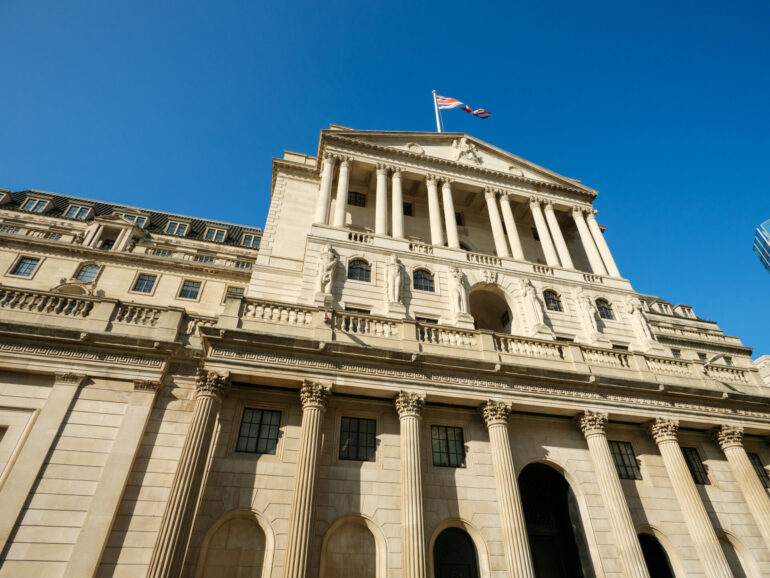In Q4 2024, the outstanding value of residential mortgage loans reached a record high, according to data from the Bank of England’s Mortgage Lenders and Administrators Statistics.
During the final quarter of 2024, the total value of outstanding mortgage loans increased by 0.5%, reaching £1,678.2bn.
This marked the highest level since reporting began in 2007 and represented a 1.3% increase compared to the same period last year.
Mortgage activity saw a notable rise, with the value of gross mortgage advances climbing by 4.9% from the previous quarter to £68.8bn.
This was the highest level of new advances recorded since the final quarter of 2022 and an impressive 29.9% increase from the previous year.
Similarly, new mortgage commitments – representing loans agreed to be advanced in the coming months – rose by 4.9% to £69.3bn, the highest level since the third quarter of 2022 and 50.7% higher than a year ago.
The data also highlighted a shift in borrowing trends. The proportion of lending to borrowers with a high loan-to-income ratio increased by 0.5% from the previous quarter to 45.8%, marking the highest level since the end of 2022.
This figure was also 3.1% higher than the same period last year.
Meanwhile, the share of gross mortgage advances used for house purchases by owner-occupiers dropped slightly by 0.8% to 63.7%, though it remained 3.9% higher than a year ago.
Remortgaging activity showed mixed trends. The share of gross advances for remortgages by owner-occupiers rose by 0.7% from the previous quarter to 23.5%, though it remained 4.8% lower than a year earlier.
First-time buyers continued to play an increasingly significant role in the market, with their share of total lending increasing by 0.3% to 29.6%, the highest proportion recorded since reporting began in 2007.
This figure was also 1.9% higher than last year.
Despite the overall growth in mortgage lending, arrears remained a concern. New arrears cases, as a proportion of total outstanding balances with arrears, rose by 2.3% to 12.0% in the last quarter.
However, this was 1.5% lower than a year ago.
The total value of outstanding mortgage balances with arrears increased by 1.3% from the previous quarter to £22.1bn, an 8.4% rise compared to last year.
The proportion of total mortgage loan balances with arrears relative to all outstanding mortgage balances held steady at 1.3% from the previous quarter, reflecting a 0.1% increase from a year ago.
Holly Tomlinson, financial planner at Quilter, said: “The latest mortgage lending data highlights a housing market that, despite ongoing economic uncertainty, remains remarkably resilient.
“People are clearly adjusting to what is the new normal when it comes to mortgage rates. This has also translated into people being much more prepared for their fixed term deals coming to an end.
“For example, clients are getting in touch 12 to 18 months in advance wanting confirmation on what they can borrow so that when the time comes, they are able to get the best possible rate.”
“First-time buyer activity remains incredibly resilient despite significant headwinds. This suggests that, despite stretched affordability and mortgage rates that remain elevated compared to the ultra-low levels of recent years, many are still determined to get onto the property ladder.
“Many first-time buyers are taking shorter term fixed rates due to optimistic views of the future of the market.
“However, the ability to borrow is being pushed to its limits, with lending to borrowers at high loan-to-income ratios also on the rise. This reflects the reality that buyers, particularly in pricier areas, are needing to stretch their incomes further to access homeownership.”
Tomlinson added: “Looking ahead, interest rates will remain a key factor shaping the market.
“While expectations are growing that the Bank of England cut rates further later this year, there is still uncertainty over when and by how much.
“Many lenders have already lowered mortgage rates slightly, but with borrowing costs still higher than they were a few years ago, affordability pressures persist.
“Changes to Stamp Duty in 2025 could also weigh on demand, particularly for first-time buyers who currently benefit from higher tax-free thresholds.
“With affordability still stretched, borrowers should remain cautious about overextending themselves.
“That said, the market remains active, and for those able to secure a mortgage at a manageable rate, there are opportunities to be found.”




